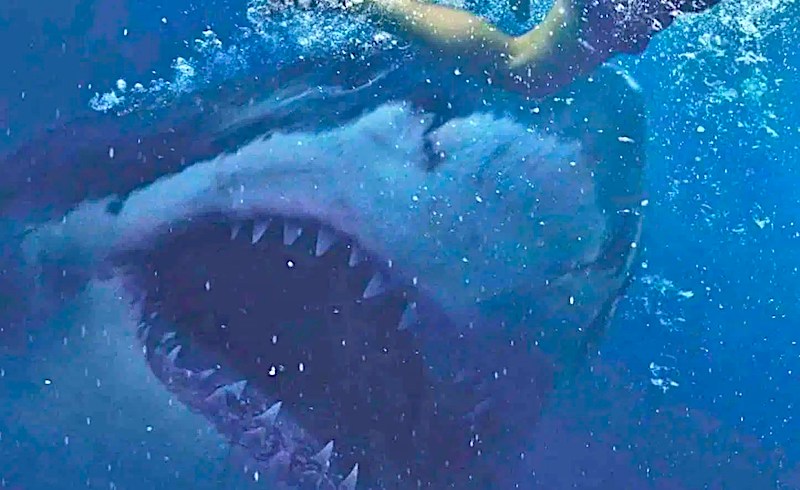"I like the idea that longboarding is out there, waiting for me."
A week or so ago, I got in the car and drove to Ventura.
Along the way, I got stuck in a traffic jam.
There I sat in traffic on the way to an event at Patagonia and felt terribly guilty about my life choices. I am bad at the planet, I thought, as I sat there crawling along, blowing exhaust into the air with all the other people blowing exhaust, too.
At least the ice cream was organic. On the way to the traffic jam, I surfed bad Rincon and ate good food at The Good Plow. Ice cream understands. Ice cream makes everything okay, even the parking ticket I got in Ventura. But that is getting ahead of the story.
The bad surf and the good ice cream and the traffic were all on the way to see Lauren Hill’s new film, The Physics of Noseriding. If you don’t know Lauren, she wrote the large-format book, She Surf where she wove together a diverse set of stories about women’s surfing from around the world. The film offers an endearing and nerdy look at how longboards work, and specifically what makes noseriding possible.
I’m pretty sure the curve of a woman’s hip off the end of a longboard, that dance, that swing, is one of the most beautiful things in surfing.
But, how does it actually work?
That’s the question Lauren sets out to answer. It all sounds extremely earnest, and not at all the kind of thing I would normally wade through traffic to watch. Lauren’s skill as a storyteller turns the film into a joyful exploration.
I should tell you that I can’t longboard. Not properly, at least.
Oh, I can stand there like the Statue of Liberty and hope the giant slab of fiber glass goes mostly in the right direction. This does not work all that often. Graceless splashing and flailing is the usual result. I don’t understand how to make a longboard sing and dance and do magical things. Noseriding might as well be a walk on the moon.
Growing up in Florida, Lauren learned to make the most of small surf. Longboarding and the noseriding’s weightless sensation captivated her imagination. These days, she lives in Australia where the long walls of Byron Bay’s points give her more space to play. Her experiences inspired the film, and she wanted to showcase the skills of surfers she admires.
The wide-eyed curiosity of Namaala Slaab provides a frame for the film.
Namaala, whose sister Jalaan is a shaper teeters on a fallen log in an illustration of balance, and her explorations bring the more abstract ideas of the film to life. In a tribute to a scene from Gidget, Namaala rides a longboard on her bed in a demonstration of the Coanda effect.
Yes, there’s actual physics in the film.
Lauren takes us into the deep end, and ably brings us back. I came away from the whole thing much smarter. And while Lauren could not fit a discussion of board design into the film — maybe she can make a future film or write an article on this side of the story — I felt like a “got” longboards in a way I didn’t in the past.
There’s also some lovely surfing, and a hilarious, too real depiction of shortboarders. If you don’t recognize yourself, my shortboard friends, you are not being honest. That’s us, flailing away in search of an elusive and impossible grace.
Great, you’re saying. She’s going to take up longboarding and make us read all about it. She made us read about her red bikini and and her ice cream and her parking ticket. Longboarding?
This is a bridge too far. Someone make her stop.
Since I have banned myself from buying new boards for the time being, you are safe.
For now.
Recently, I wrote a profile story of Matt Warshaw, which you can read in the next issue of Emocean Magazine. As you all know by now, Matt lives in Seattle and has mostly quit surfing. As I tried to make sense of Matt’s relationship with surfing, I had a number of lengthy conversations with long-timers about life and change.
If you want to surf forever, how do you do it? How do you keep it new and fresh? Is it a worthy or even possible pursuit? I think one answer is to try different things. Ride different boards. Seek out different waves.
And so, I like the idea that longboarding is out there, waiting for me. There’s a whole way of surfing that I don’t understand and have never really experienced. Maybe I’ll never try it. Maybe I’ll quit and move to Seattle first. But I like the idea that it’s out there, one of an infinite range of possibilities, a road to take or not as inspiration sparks.
I loved Lauren’s film for its light-hearted invitation to learn more about one of surfing’s mysteries. And maybe one answer to the question of how to surf forever is to remain open to its possibilities, even if they don’t all fit into the present.
But then again, I’m just an idiot with a parking ticket.
Lauren’s currently on tour with her film, and you can follow her @theseakin for showings in Australia. The film appears online next year.





